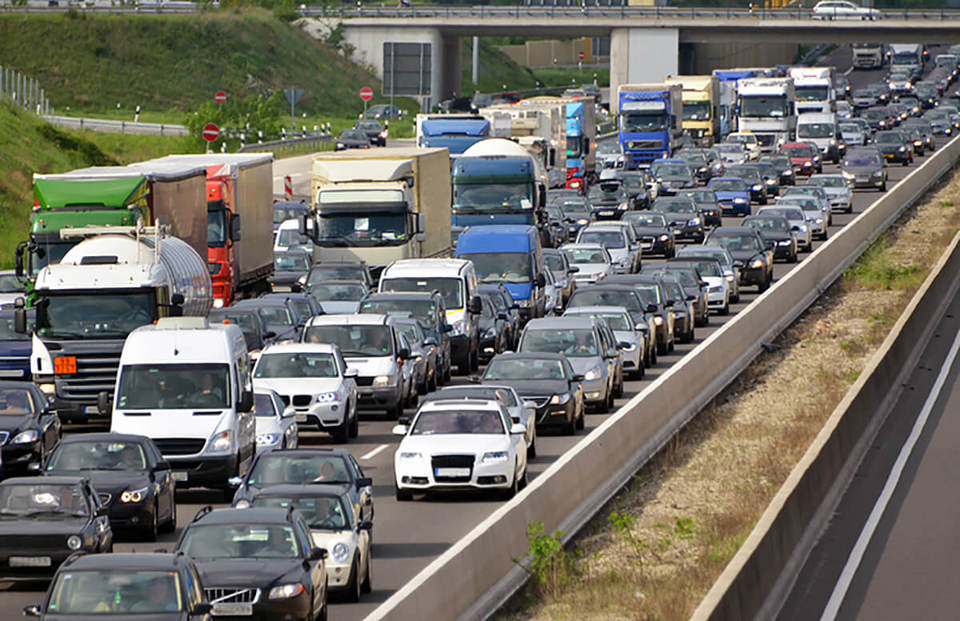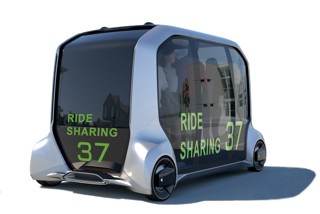Car traffic reached a record high of 254.4 billion miles in 2017, with overall traffic on Great Britain’s roads up by 1.3% from the previous year to 327.1bn miles.
The figures from the Department for Transport (DfT) also show that van traffic rose by 2.7% to reach a record high of 50.5bn miles over the same period.
Cycle traffic showed the greatest increase of any vehicle (in percentage terms) up by 3.1% year-on-year to 3.3bn miles
Bus and coach traffic saw the largest decrease, falling by 3.4% from 2.5bn to 2.4bn miles, continuing an overall decline seen since 2007, while motorcycle traffic remained broadly stable.
However, traffic patterns could change significantly in the future, with mobility experts predicting a switch away from car ‘ownership’ to vehicle ‘usage’.
Instead of using the car to get from A to B, private and business motorists will choose multi-modal options, including public transport, ride hailing firms and autonomous cars to complete their journey.
Christoph Domke, director of Mobility 2030 at KPMG, highlighted how the number of 16-to 17-year-olds applying for a provisional driving licence had halved in the past 20 years.
“Going forward, vehicle ownership will not be as important as it was in the past,” he told delegates at the Low Carbon Vehicle Partnership (LowCVP) annual conference.
“What we are seeing is vehicle ownership declining quite significantly, while passenger miles will increase quite a lot.”
The UK new car market declined in 2017, with annual registrations falling for the first time in six years to 2.5 million vehicles.
The Society of Motor Manufacturers and Traders (SMMT) is predicting a similar fall this year, with car registrations ending the year 5.1% down on 2017’s total at 2.4m units.
A decline in ownership will also herald a reduction in the number of vehicle manufacturers, according to Domke.
“At the moment we have 27 large OEMs (original engine manufacturers) in the market,” he said. “We at KPMG predict that within the next 10 years that number will half.”
Car ownership has grown significantly over the years due to the relative cost of buying a motor vehicle decreasing. For example, only 14% of British households had access to a car in 1951, but that had increased to 77% in 2016.
The DfT says there remains scope for further growth in ownership as, in 2016, 44% of households in the lowest income quintile were without access to a car.
But, Chris Perry, country lead at mobility firm Maas Global, is not so sure. He believes that as mobility as a service (MaaS) becomes more defined and affordable, manufacturers will, inevitably, sell fewer cars.
“It is perhaps not a surprise that one of the most significant investors in Maas Global is Toyota Financial Services,” he said. “ looking to replace the revenue it would have received from selling cars to the model of the future which is one of usage and services.”
Perry told the LowCVP conference that the car will still have a key role to play. “Our view is the car is always going to be a key part of the mobility ecosystem,” he said.
“For many journeys, public transport or ride share is not going to work. Most people are going to need a car for some of their journeys, some of the time, but if we can move away from owning a car then there will be growth in alternative modes .”
Maas Global launched its Whim app in the West Midlands in April, offering a multi-modal transport alternative to car ownership.
Within the first month, there were almost 3,000 downloads of the app, which combines access and payment for different transport options, including public transport, taxis and car hire.
In urban areas, factors such as road congestion and better cycling and public transport links can make car travel a less attractive option than in rural areas.
Furthermore, figures from DfT suggest that compared with using a car, reaching key services using public transport takes more than twice as long on average in rural areas, but only about 50% longer in urban areas.
Mobility providers certainly see a greater opportunity for growth by initially targeting larger cities, rather than rural areas. But, as mobility platforms develop and include a wider range of providers, their use across the country will become more widespread and could significantly change the travel patterns seen today.






















Login to comment
Comments
No comments have been made yet.